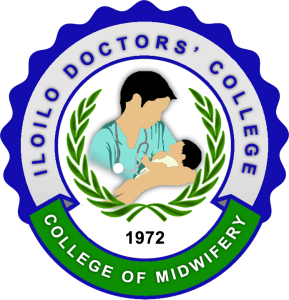
History
On February 13, 1972, a year after the Iloilo Doctors’ Hospital became operational, the Board of Directors of the Iloilo Doctors’ Hospital Incorporation decided to organize a Nursing and Midwifery School as its educational arm. It was called Iloilo Doctors’ College School of Nursing and Midwifery because it initially offered a three-year Graduate in Nursing course and an 18-month course in Midwifery. In June 1972, the IDH School of Nursing and Midwifery was given permit by the Bureau of Private Schools and operationally opened its door to the first 106 Nursing and Midwifery students.
The Nursing Staff Dormitory of the hospital was remodeled and served as the initial school building. Adjacent to this school house was built a one storey building which served as additional classroom and Nursing Arts Laboratory.
After a year of operation, the demand for additional funds prompted to Board of Directors of the Iloilo Doctors’ Hospital to organize a sister corporation that will own and operate the new school. Hence, the Integrated Educational Corporation (Iloilo) was formed and approved by the Securities and Exchange Commission of February 9, 1973. With the fresh capital funds generated by the new corporation, a 3-storey concrete building was built in 1973 and made ready to accommodate all the nursing students.
By June 1974, the one-storey building built in 1972 was converted into a two-storey concrete school house with five new classrooms and a library. The school was ready to accept new students not only nursing but also Medical Secretarial students as well. Considering the academic and infrastructure expansions, 405 students were enrolled during the first semester.
Our first Midwifery students graduated in March 1974 after 18-month schooling and scored 100% passing in the Nursing Board Examination. For six consecutive times, all the Midwifery graduates passed the Board and scored 100% with some of them landing in the top 10.
On June 2, 1975, the IDH School of Nursing and Midwifery was granted recognition in Nursing and Midwifery. The name of IDH School of Nursing and Midwifery was formally changed to Iloilo Doctors’ College after due approval of the Department of Education and Culture (DEC) then by the Ministry of Education and Culture (MEC) that also approved IDC’s permit to offer another baccalaureate program to implement the Bachelor of Science in Nursing course.
In keeping with its tradition, the IDC throughout its history has championed the education and training of competent health professionals who have contributed their share in national development, particularly in the health care of the people in the country. Considerable headway has been achieved in such fields as Nursing, Midwifery, and Medical Secretarial course, Health Aide, Radiological Technology, Pre-Dental, Biological Science, Medicine, Dental, Medicine, Computer Secretarial and Physical Therapy and Tourism, as well as the High School and Kindergarten courses. Subsequently, the Tourism and the High School Departments were discontinued.
In IDC, students are engaging in many opportunities for developing social responsibility that will move them to contribute to national development and social transformation.
Diploma in Midwifery
Diploma in Midwifery is a two-year program consisting of general education and professional courses which provide students with entry level midwifery competencies. This two-year direct entry program includes Clinical Practicum, Foundations of Midwifery, Normal Obstetrics, Basic Care of Infants and Feeding, Basic Family Planning, Primary Health Care and Midwifery Ethics, Law and Practice.
Graduates of the program are qualified to take the government licensure examination.
Program Objectives
I. General
Diploma in Midwifery aims to:
6. Develop knowledge, attitudes and kills of first level midwives in th care of the girl-child, the adolescent and the adult woman prior to, during and following pregnancy. This prepare midwives to:
1.1 give the necessary supervision, care and advice to women during
pregnancy, labor and the post-partum period;
1.2 manage normal deliveries as her responsibility and care for the
child.
II. Specific
7. Specifically, graduates of two-year program are expected to:
1.3 perform primary health care services in the community (promotive and preventive);
1.4 counsel and educate women, the family and the community
regarding family planning including preparation for
parenthood/parenting;
1.5 detect abnormal conditions in the mother and infant;
1.6 procure specialized assistance when necessary (consultation or
referral).
Course Offered:
2 year – Midwifery Course